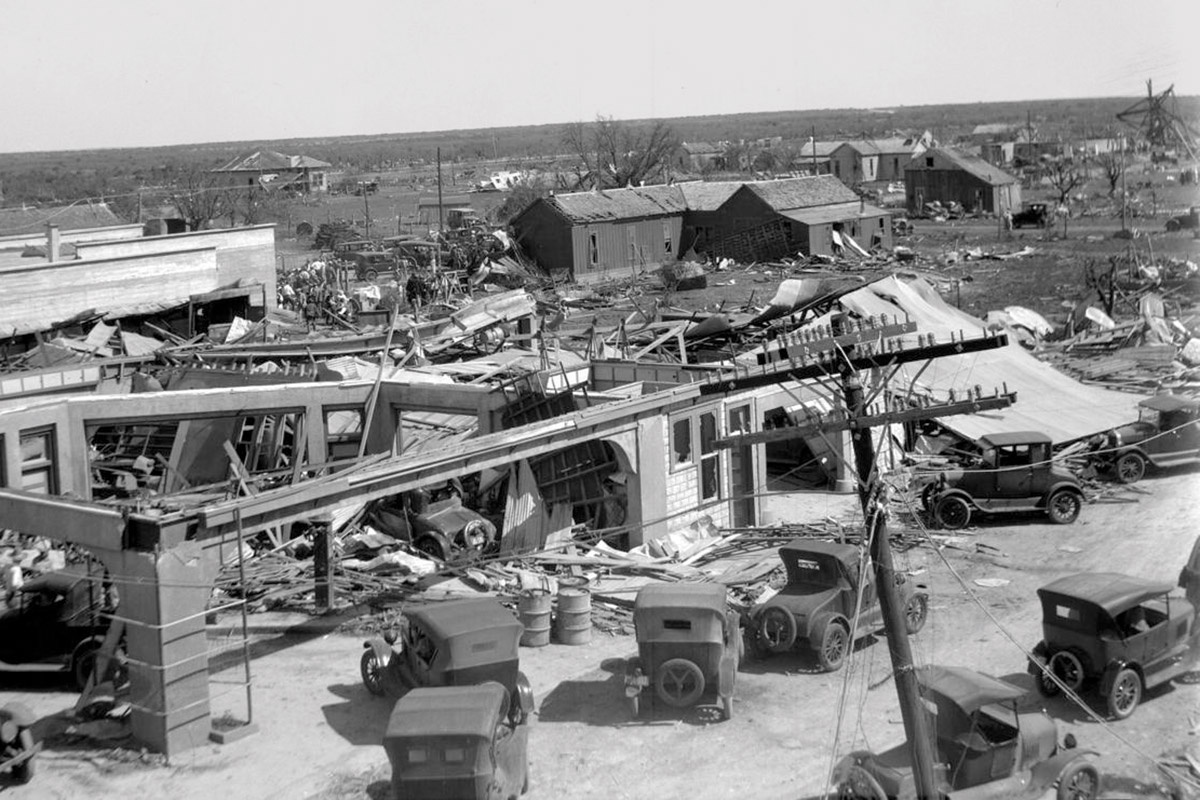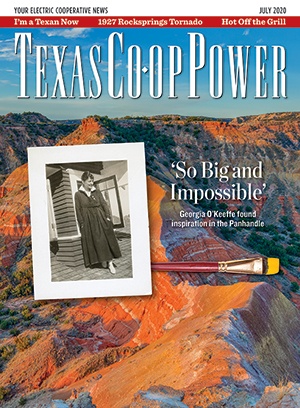On April 12, 1927, a tornado tore through the Edwards County town of Rocksprings, killing 74 people and injuring more than 200. Among Texas tornadoes, it ranks as the third deadliest, behind one that struck Waco on May 11, 1953, killing 114 and injuring 597, and one that hit Goliad on May 18, 1902, also killing 114 and injuring 250.
The damage scale for twisters goes from EF0 to EF5, with EF5s inflicting the most damage. Since 1950, when official record keeping began, the National Weather Service has determined that 59 tornadoes qualify as EF5, six of them in Texas: Jarrell, May 27, 1997; Brownwood, April 19, 1976; Valley Mills, May 6, 1973; Lubbock, May 11, 1970; Wichita Falls, April 3, 1964; and the 1953 Waco twister.
Rocksprings, 100 miles west of San Antonio, became the seat of Edwards County in 1891, complete with a courthouse. Townspeople built a public school in 1893, and by 1914, the town had 500 residents, a hotel, saloons, a general store and bank. A high school opened in 1916.
On that afternoon in 1927, enormous black clouds gathered, producing large hail and winds that took out the power. The tornado touched down 3 miles to the northwest and moved southeast, growing to almost a mile wide as it crossed Rocksprings. It continued southeastward for at least 35 miles and may have traveled as far as 65 miles.
The second floor of the high school, where a music recital had been planned for that evening, was gone.
“If it had happened an hour earlier, the whole town would have been in the school auditorium,” says Andrew Barnebey, president of the Devil’s Sinkhole Society in Rocksprings. Its visitor center has a small display on the tornado. “Only eight buildings in town were not damaged.” The twister destroyed all the town’s churches, damaged the courthouse (but not the jail) and toppled the water tower. The town of Junction, 47 miles northeast, gave Rocksprings a new one, Barnebey adds.
“The telephone operator had to go out of town to find a live telephone line to tell the rest of the world about it,” he says. “People came from throughout the surrounding countryside and even Mexico to help. The first rescuers were soldiers on horseback from Fort Clark.”
The town held a commemorative ceremony on the event’s 90th anniversary, in 2017. Edwards County Historical Commission chair Kari Cloudt says research for the event turned up many heartbreaking stories, including entire families lost. Others show the goodness in people, she adds, such as the 1,000 doses of tetanus vaccine sent by what is now Bristol-Myers Squibb to San Antonio’s Kelly Field, whose pilots airdropped them into town.
The twister damaged the original, wooden circa-1916 Rocksprings Hotel, but a concrete wing added in 1926 served as a temporary hospital for those not seriously injured, says Debra Wolcott, current owner. Those with serious injuries were taken to hospitals in San Antonio via train.
The town quickly replaced the school with a larger one and rebuilt churches and the hotel. The 2010 census counted 1,182 residents. Visitors know Rocksprings as the Angora goat capital of the world and for the nearby Devil’s Sinkhole State Natural Area, famous for a seasonal population of 3 million Mexican free-tailed bats.
But locals can’t escape memories of 1927.
“A 14-year-old girl taking a bath when the tornado hit flew about 2 miles in the bathtub and landed in a debris field. There is still debris there,” Cloudt says. “A lot of people who are still here lost family members. It must have been just a hideous storm.”
Read more of Melissa Gaskill’s work at melissagaskill.blogspot.com.


